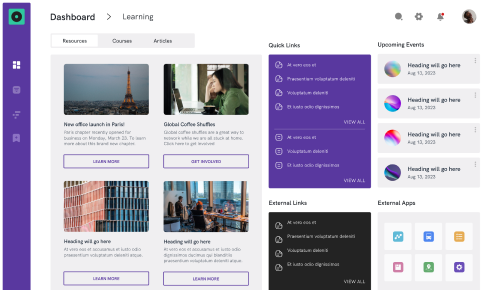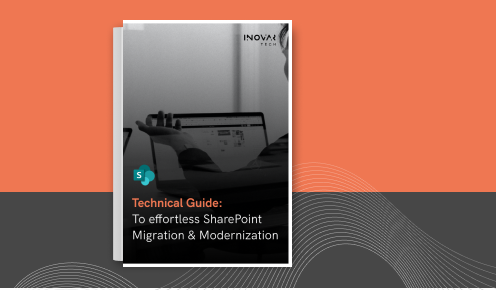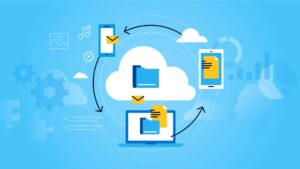Stay Ahead Of The Curve With SharePoint For Unparalleled Productivity
 By Anita Srinivasan
By Anita Srinivasan
 28th September, 2023
28th September, 2023
sharepoint online
sharepoint
SharePoint Integration
SharePoint Solutions
In the ever-evolving landscape of modern business and collaboration, SharePoint has emerged as a powerful platform that empowers organizations to streamline their workflows, foster efficient teamwork, and manage content effectively.
Despite being around since 2001, SharePoint shows no signs of slowing down anytime soon. SharePoint’s popularity has only increased as the year progresses. It has successfully established itself as one of the well-known enterprise applications in the market in recent times.
Today, two out of three enterprises work with SharePoint, and more than 50% of Fortune 500 companies have and use SharePoint to streamline their operations.
With more than 350,000 companies around the world now using SharePoint, active users have grown by over 90 per cent, and the data stored in SharePoint by 250 percent, in the last year alone reports Gartner.
Collaboration among teams is vital for a company’s success. Organizations require tools that can enable them to work together seamlessly, share knowledge, and streamline processes. SharePoint has become one such powerful and versatile platform that has emerged as a go-to solution for achieving these goals.
For more in-depth insights on SharePoint Migration approaches and best practices, please refer to our exclusive whitepaper resource.
In this blog post, we will discuss how adopting SharePoint can improve productivity and collaboration within your organization.
WHY SHAREPOINT?
- SharePoint Document Management
There are three ways to implement SharePoint: On-Premises, Cloud, and Hybrid. With SharePoint, you can collate, store, and manage all organizational documents in a single location. SharePoint can help improve productivity and eliminate versioning issues during file editing and sharing. It streamlines the process, making it easier and more efficient.
- Effective Team Collaboration
Teams can brainstorm ideas and complete tasks by collaborating on projects, sharing documents, and communicating effortlessly through SharePoint. SharePoint’s user-friendly interface and features like discussion boards, calendars, and task lists promote collaboration, enhance productivity, and ensure alignment among team members.
SharePoint supports the creation of custom workflows, web parts, and extensions. Moreover, it integrates with Power Platform, which provides low-code tools for building custom business applications and automation solutions. This flexibility empowers organizations to adapt SharePoint to their evolving needs and leverage its capabilities to their fullest extent.
SharePoint security is a multi-layered platform designed to protect your data from unauthorized access, tampering, and leakage. Your data will remain safe and compliant with industry standards when stored in SharePoint. By implementing the appropriate security practices, educating your teams, and leveraging SharePoint’s advanced security features, you can confidently protect your valuable data and collaborate securely within your organization.
- Streamlined Business Process Workflows
SharePoint contains a nifty feature called workflow that automates the coordination of tasks such as project approval. This automated movement of documents or items works by a set of instructions and parameters known as business logic. By streamlining and automating specific tasks, workflows save time and energy, allowing you to focus on other critical tasks.
ADOPTING SHAREPOINT
Adopting SharePoint for your organization is not just about bringing in a new tool; it is about changing how teams within your organization collaborate, share knowledge, and manage critical tasks. Before embarking on a journey towards SharePoint Migration, here are some considerations to help you start:
- Define Specific Goals And Objectives
It is essential to define clear objectives before adopting SharePoint, such as streamlining document management, improving team collaboration, or enhancing knowledge sharing. These objectives will guide your adoption strategy.
Effective SharePoint adoption requires leadership support. Communicate benefits and ROI to executives, emphasizing alignment with strategic goals.
- Develop a Comprehensive Training Plan
SharePoint can be complex, so invest in training programs for users. Provide both basic and advanced training sessions to ensure everyone can use SharePoint effectively.
- Create User-Friendly Resources
Develop user-friendly guides, FAQs, and tutorials that users can reference as they navigate SharePoint. These resources will ease the learning curve.
Begin with a pilot project or a specific team to test SharePoint’s capabilities. Gather feedback and make necessary adjustments before rolling it out to the entire organization.
- Set Up Governance Policies:
Establish governance policies to maintain control over SharePoint. Define roles and responsibilities, permissions, and content retention policies.
- Measure and Monitor Adoption
Continuously monitor SharePoint adoption using analytics and user feedback. Identify areas that require improvement and adjust accordingly.
SharePoint adoption is an ongoing process. Regularly revisit your objectives, gather feedback, and make improvements to ensure they remain aligned with your organization’s evolving needs.
SHAREPOINT ONLINE VS. SHAREPOINT ON-PREMISES
SharePoint Online and SharePoint On-Premises are two different deployment methods for SharePoint.
SharePoint Online is a cloud-based version of the application. It offers easy access, automatic updates, and maintenance without the need for any local infrastructure.
In contrast, SharePoint On-Premises is hosted and maintained on an organization’s own servers, providing more control over customization, security, and performance, but requiring in-house IT resources for management and updates.
Let us explore their unique features for better understanding.
Starting with SharePoint Online, here are some of its benefits:
- Setting up and managing SharePoint Online is relatively easy since Microsoft handles infrastructure, updates, and maintenance. Organizations do not have to worry about server hardware or software updates. In addition, it provides the flexibility of scaling resources up or down as needed, making it suitable for all business sizes.
- Microsoft regularly updates SharePoint Online with new features, security patches, and performance improvements, ensuring users can access the latest versions. It also benefits from Microsoft’s robust security measures, compliance certifications, and data redundancy, including features like data loss prevention (DLP) and advanced threat protection (ATP).
- SharePoint Online integrates seamlessly with other Microsoft 365 apps like Teams, OneDrive, and Outlook, facilitating remote collaboration and communication.
- While SharePoint Online allows customization and development using SharePoint Framework (SPFx) and Power Platform, it has some limitations compared to SharePoint On-Premises when it comes to full-trust solutions and deep server-level customizations.
Coming to SharePoint On-Premises, here are some key points that can help you decide:
- SharePoint On-Premises is a deployment option where the software is installed and maintained on servers within an organization’s own data centre or private cloud infrastructure.
- This option gives organizations more control over their infrastructure and customization options. They can deploy custom solutions and integrate with other on-premises systems.
- Organizations with strict data sovereignty or compliance requirements may prefer SharePoint On-Premises because they have direct control over data storage and management.
- Moreover, updates and patches are less frequent in SharePoint On-Premises, allowing organizations to manage their update schedules at their own pace.
- However, setting up and maintaining an on-premises SharePoint environment involves higher upfront costs, including hardware, software licenses, and IT staff.
- Organizations are responsible for implementing their own security measures and compliance policies in an on-premises environment. Also, ongoing maintenance, including hardware upgrades, software updates, and backups, requires dedicated IT resources.
- Despite the higher initial costs and maintenance overhead, some organizations opt for hybrid deployments, combining components of SharePoint Online and SharePoint On-Premises, allowing for a mix of cloud and on-premises solutions.
SharePoint is a multifaceted tool that offers significant value to collaboration, document management, and business process automation. As you become more proficient with SharePoint, you can delve deeper into its advanced features and customize it to fit your organizational requirements.
Remember, SharePoint is a dynamic platform, meaning there is always something new to discover and leverage for greater productivity and efficiency.
To learn more about how SharePoint Migration can help you and your organization, visit our website and book a free consultation with our team of experts today!
References:
1. Gartner Magic Quadrant. (Source: Garner)
2. The Most Surprising SharePoint Statistics And Trends in 2023. (Source: Gitnux)




























